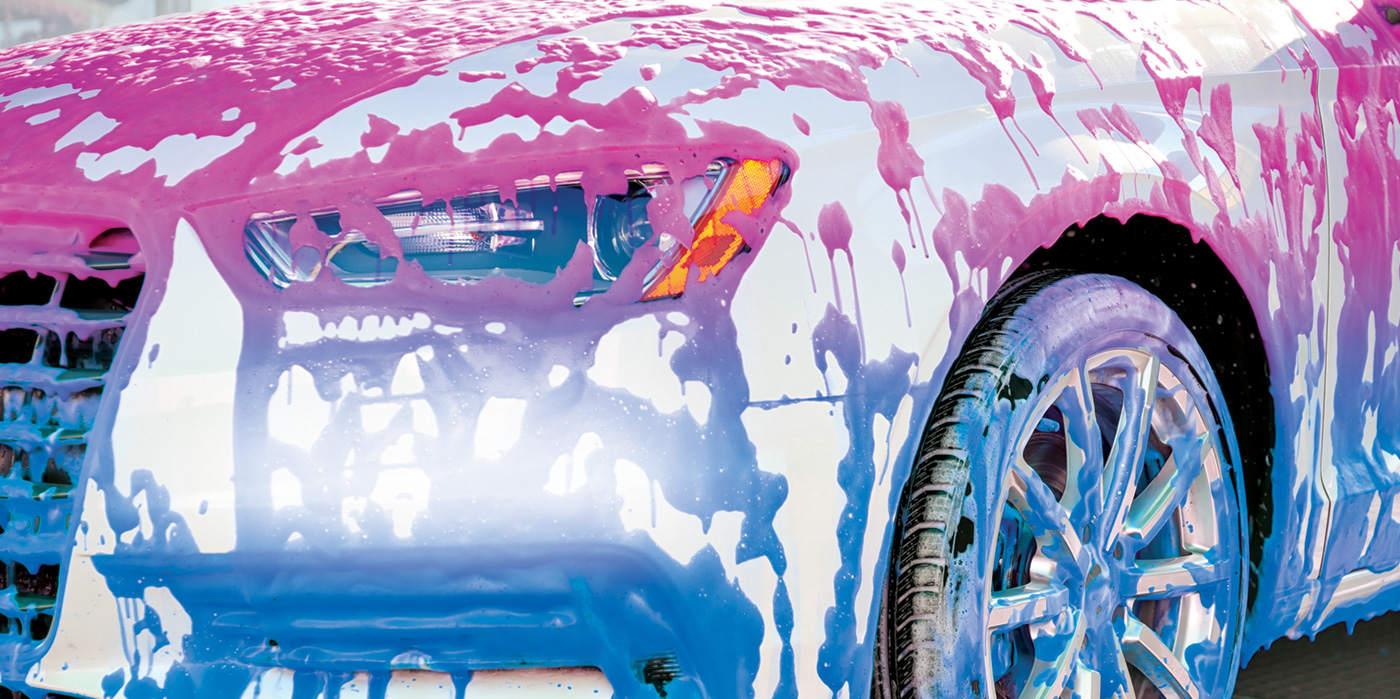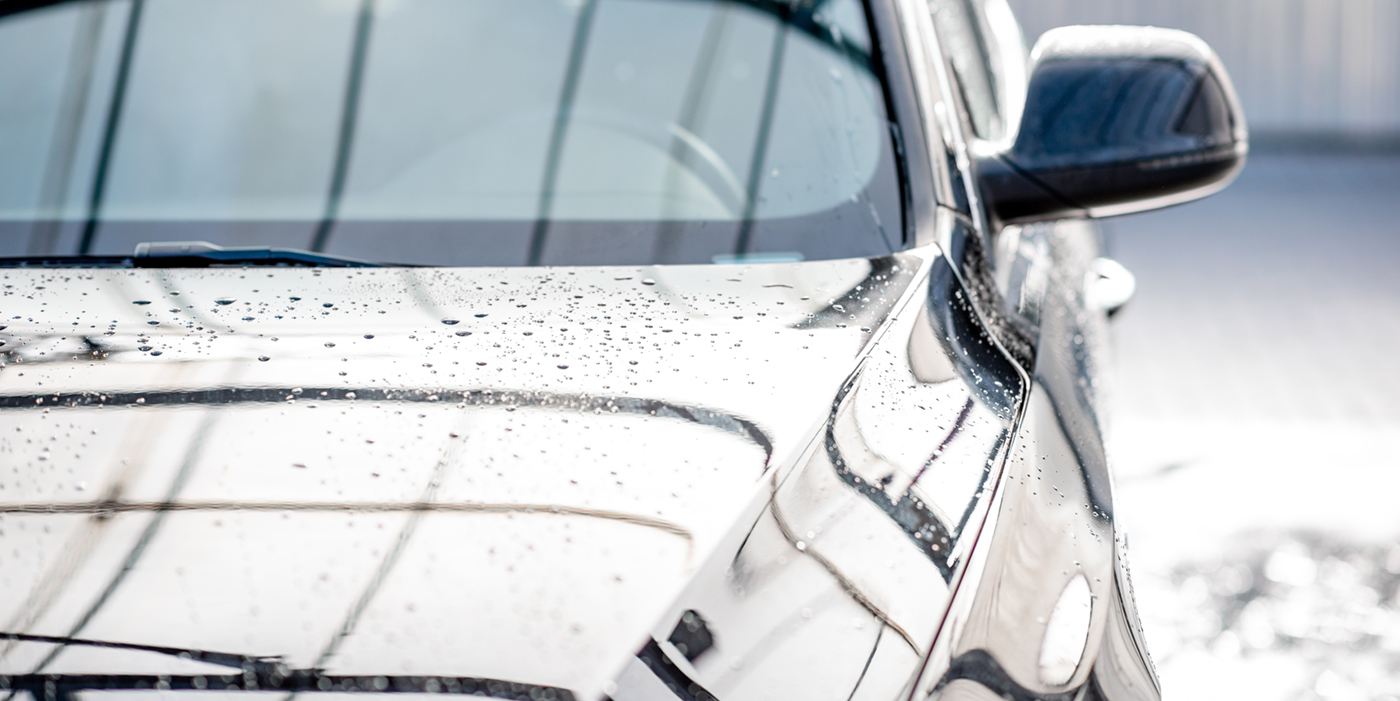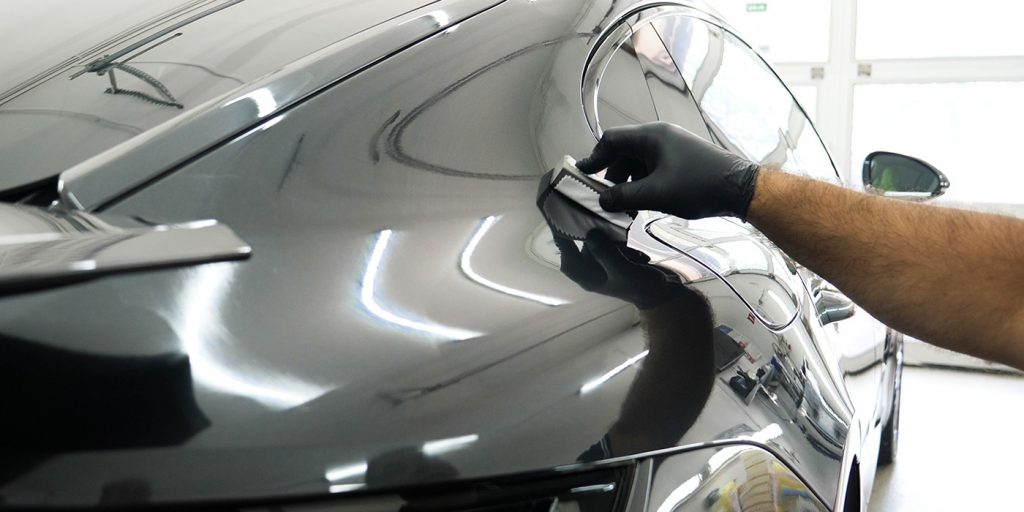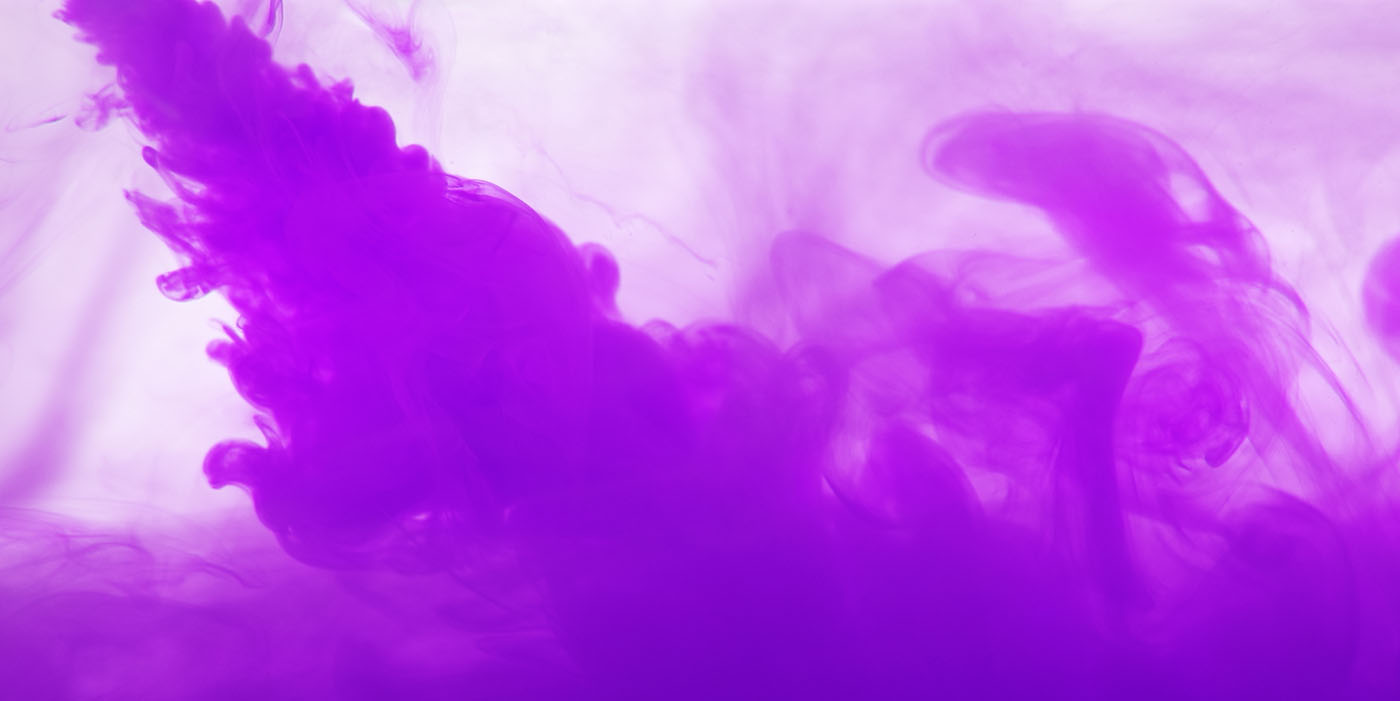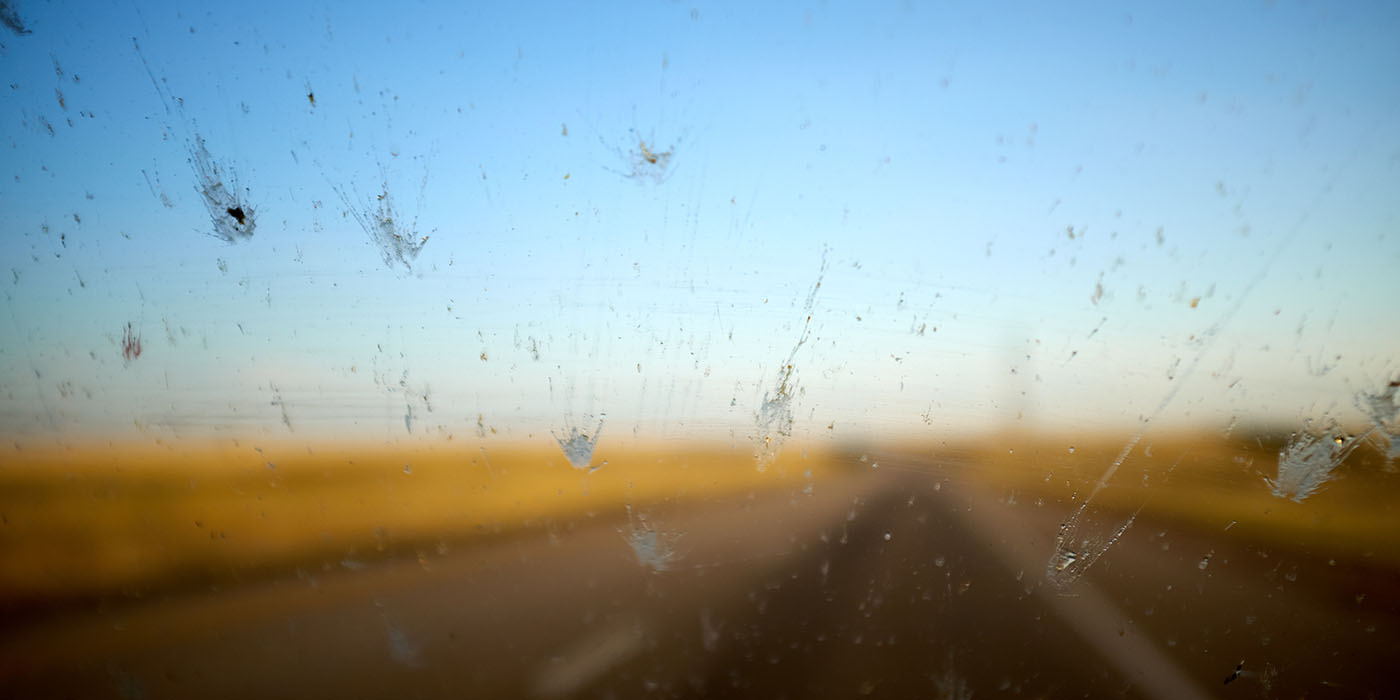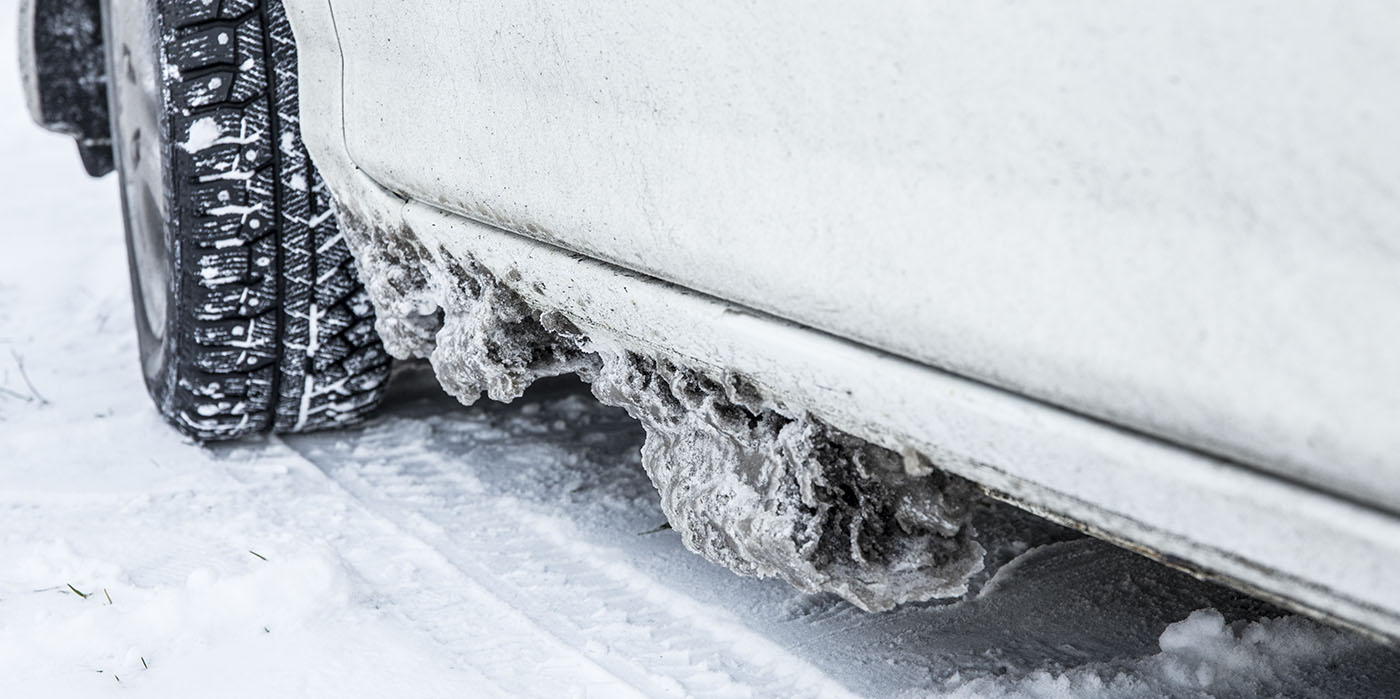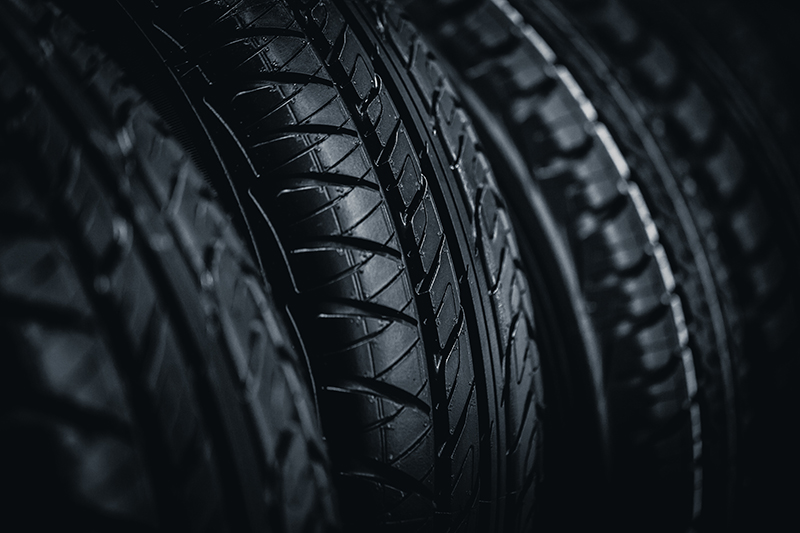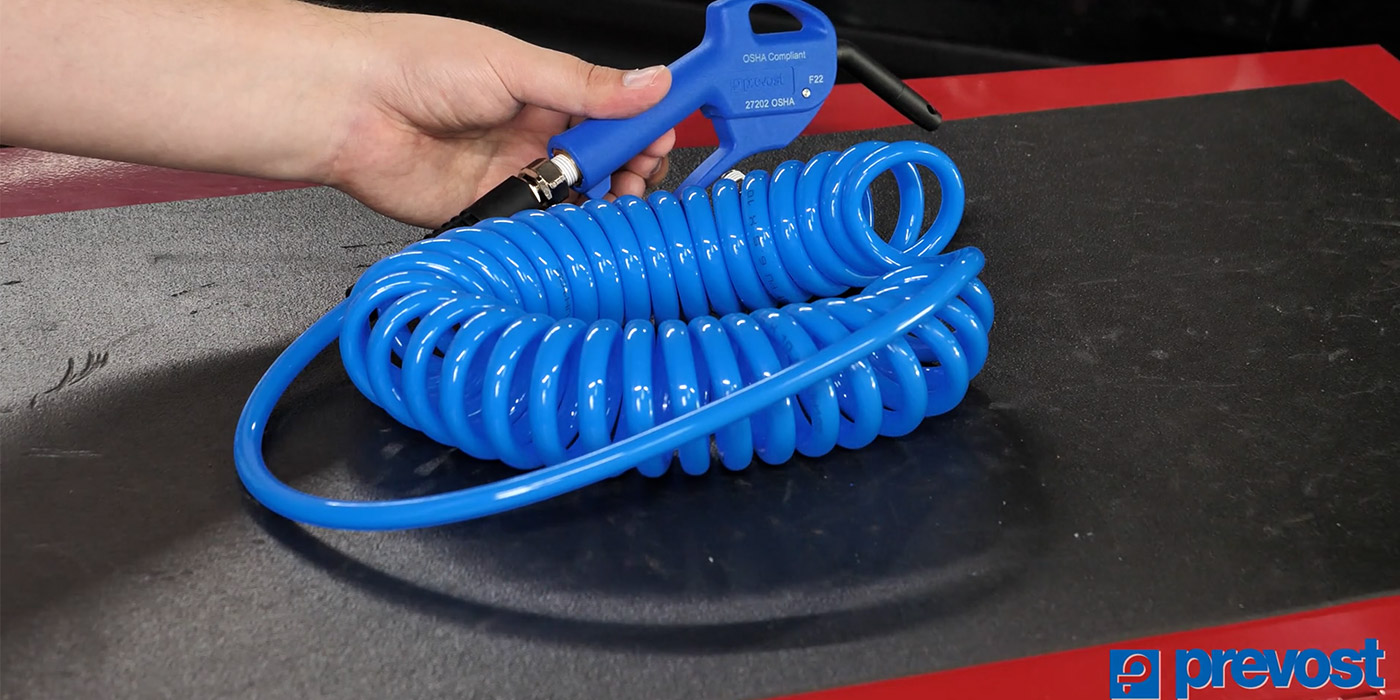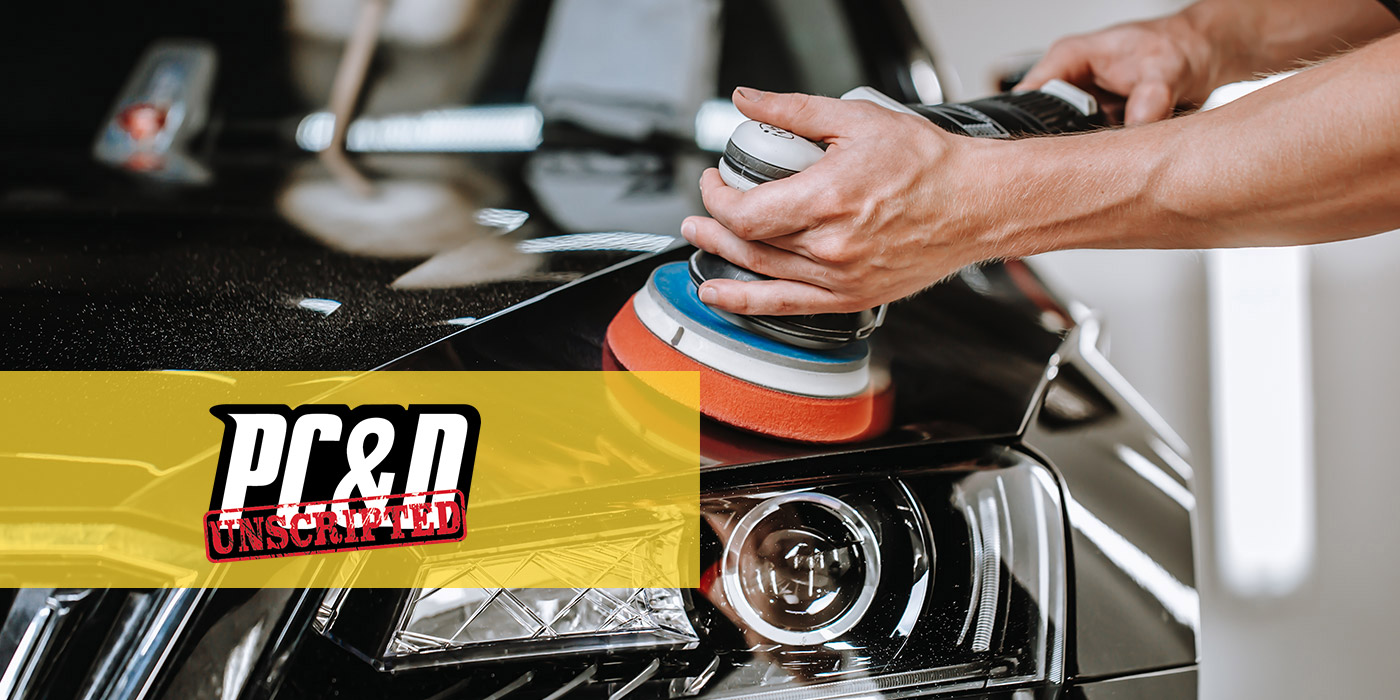Presenting everything you need to know about quality, reclaim and chemical compatibility.
This special coverage on water has been designed to help and guide you on what it is you need to know to better your water system or install reclaim equipment. Water is necessary for your operation, but it has to be good quality water in order to do the job correctly. The following pages contain five different articles which address all of the important issues having to do with water. Each article was written by an expert in the water reclaim, water treatment and chemical industry.
Problems and solutions
Presenting five problem solving case studies from different water reclaim installations.
By Charles Borchard
I want to talk about five issues that come up with reclaiming and reusing water in vehicle washing. These are scenarios that have come up that we have addressed, and while they may be a little out of the ordinary they are by no means unique. With any luck, if you have a similar situation, these little vignettes might help you with your issue.
Before we get to the fun stuff I want cover some basics first. All reclamation or recycling systems use a tank system to capture the water after it is used. These are often called clarifier tanks or oil water separator tanks. Usually some form of these tanks are required by the municipality that provided the sewer service, it helps the sewer system if the suspended solids are allowed to settle in these tanks, thereby clarifying the water. If the tank system is properly sized not only will the solids settle to the bottom, the oils and lighter than water contaminants will rise to the top and become trapped out of the reuse stream. Periodically these tanks will need to be pumped out and the water hauled off to be processed. (See the diagram of a typical tank layout.)
City mandates ‘green’
Several years ago, the first wash operator was building a site in a high-end neighborhood, and the municipality wanted his site to use 95 percent recycled water. The site had a sewer connection, and there was not a shortage of capability to handle the wash water effluent, they said they were just being “green.”
The wash operator determined that he would be using 16 gallons of fresh water to deliver the high-quality wash he wanted for his customers. He put in a mixture of high-pressure and friction equipment all to run on reclaimed water, and with the 16 gallons they were using for the rinse it was a total of 160 gallons per vehicle. This was presented to the municipality who rejected it as “not enough.” After several phone calls and multiple wasted hours trying to explain to the municipality that 90 percent was pretty good and it was not really viable to try and reduce the fresh water amount any further we reached an impasse.
For the 16 gallons of fresh water required to provide the quality wash, the operator wanted to be only five percent of the total volume used. So, we needed to be using 320 gallons per vehicle washed. The solution was to use more reclaimed water. The wash was already pretty efficient and there really wasn’t any way to squeeze any more water onto the vehicle. We turned underground, and using reclaimed water, we rinsed the conveyor chain. From entry to exit the average vehicle took two minutes on the conveyor so with four nozzles averaging 20 gallons per minute (GPM) each we rinsed the conveyor chain, which brought our per vehicle usage up to the required 320 gallons. In this case the conveyor chain didn’t get heavily mudded or salty snow crusted, but when I would tell this story, wash operators in parts of the country where that happens thought rinsing the chain was a good idea.
Cleaning the belt
The second situation was a customer who was using a moving belt instead of a roller and chain conveyor to move cars through his wash. This customer was in an area where he would get a heavy dirt/snow loading on the belt and it would slow down and sometimes even stop the belt. With our past experience rinsing a chain for no good reason here was an opportunity to do some good.
As we had done with wash operator number one we directed nozzles to spray water in this case across the belt to clear the dirt and snow and lighten the load on the equipment moving the belt. As with the first example the reclamation unit was upsized in GPM to provide for this additional water demand. This chain/belt rinse is now an option requested nearly five percent of the time by our customers.
Self-cleaning trench
We were approached a couple of years later by a non-traditional wash operator. What made him non traditional? This was an operator who would not on a rain day lift up the grates on the conveyor trench and send the guy with the least seniority down into the pit dressed in rain boots and armed with a flat bottom shovel to muck out the dirt and mud that had accumulated in the trench. No, what operator number three wanted was a self cleaning trench. Gently sloping sides and a slightly steeper pitch toward the drain helped a little but were not enough. What was needed was an active, not passive, solution.
Most of the time the conveyor run signal also tells the water reclamation system to run, when it stops it means the wash and water running toward the drain has stopped. Here, with the cessation of the wash signal the water reclamation system would stay ramped up and open a solenoid to a manifold of nozzles, this time near the floor of the trench versus spraying on the chain. This combination will run for a set period of time, default time is 45 seconds; this is like rinsing down your drive way when the dirt is already moving and you are just helping it along. This has also become an option that is seeing more requests.
Resetting a reclaim tank
Earlier I referenced an example of what reclamation tanks should look like. They won’t always look like that, and in some early washes they won’t look like that at all. See the pictures for an example of wash operator number four’s existing tanking, in this case more of a trench, and the modifications that he performed to make it usable for a modern water reclamation system.
Adding plumbing connections
Tanking is the most common question for retro-fitting existing vehicle wash sites, like example number four needed to modify to make his tanking more usable. Operator number five, whose tanking was fine, needed to put in additional plumbing connections from the back room to the tanking to use the reclaim system to pressurize the output to the overflow.
Site number five had a unique situation where the overflow from the carwash was going to a storm drain versus a sanitary sewer, this greatly reduced the operator’s costs of water and sewer, but he needed a reclamation system to limit the amount of water discharging as well as using the reclamation system’s filtering capability to improve the quality of the water going to the storm drain. The solution included bringing an additional line from the reclamation system into the tank, which was greatly simplified by the tanks being just outside the wall of the equipment room. Floats were used to monitor the amount of water in the underground tanks. Now with a measured discharge of cleaner water than what would overflow out of the clarifier tanks on demand made this application a success.
I hope these little examples are of some help to you. If you have an issue with trying to reclaim and or reuse water in your vehicle wash application please contact your carwash equipment supplier and check with them to see how they can help you.
Charles Borchard is the Charles Borchard is the vice president of operations for New Wave Industries.
Chemical reclaim compatibility
It takes more than equipment to make a reclaim system work.
By Tony Vertin
In today’s economic and regulatory environment, building and running a carwash is becoming increasingly difficult. Factors such as water conservation, effluent and sewage control, and environmentally-friendly detergents and waxes are becoming integral to the profitability of any carwash. To contend with these issues, the carwash industry is increasingly turning to water reclamation systems. Reclaim systems are designed to purify and recycle water; and separate out, for solid waste disposal, the washed off oil, dirt and other miscellaneous components of road film. The cleaned and recycled water is reused in the carwash, saving the carwash owner water and sewage costs. The water reclaim system is good for the environment and good for the bottom line.
Proper maintenance
Like all equipment and systems in a carwash, water reclaim systems require proper operation and maintenance. One of the most difficult issues with reclaim systems in the carwash industry is that the water being recycled contains a myriad of detergent products (presoaks, foamers, wheel and tire cleaners, bug removers) along with a group of water displacing protectants (sealers, all surface protectants, triple foams and drying agents). If these detergent and wax products are not chemically reclaim compatible, the water reclamation system may not function effectively.
Operations in a carwash have always been separated into two distinct functions: the “wash end” and the “wax end” or the “front end” and “back end.” All the cleaning operations and products (bug treatment, prep guns, presoak/prep arches, wheel and tire cleaners, foam detergents, and triple foam conditioners or cleaners) are considered to be part of the wash or soap end products. Triple foam polishes, sealer waxes, clear coat protectants, all-surface protectants and drying agents are considered wax end products. This separation of products isn't limited to just friction or touchless tunnels. Touchless IBA's apply their low and high pH presoaks first (sometimes with triple foam conditioners), high pressure rinse them off as part of the cleaning process, then follow with whatever selection of wax end products are called for in their wash menu selections. Friction IBA's function similarly with soaps first, then rinse, then wax end products. Regardless of wash type, these groups of products are always (or should be) separated by a good water rinse, creating a barrier to separate the two product groups. This process of separation is carried into the self serve washes where selection dials and instructions take the user sequentially through the presoak, tire/engine/wheel cleaner, high pressure soap, and single or triple foam brushes, followed by a rinse, then a selection of wax end choices.
Chemical chemistry
The need for separate processes is a function of chemistry. In carwashing, the first process is removal or loosening of all undesirable soil or dirt called "road film" with the various detergents. After rinsing off the residual soap, the second process is essentially re-soiling the car with “desirable dirt” or film in the form of protectants or water displacing drying agents.
The chemical components that provide soil removal in soap end detergents or in a number of sulfuric acid based low pH touchless presoaks are quite different from those components that redeposit “desirable films” in the wax end products. So different in fact that the chemical components can be totally incompatible and react together creating insoluble (unable to be dissolved in water) deposits. Should this intermingling occur on friction fabrics, the result can be the development of dirty and sometimes brittle fabric. The insoluble deposits can harbor bacteria which eventually leave their signature of green or black mold and musty odors. This same chemical incompatibility can occur on a grand scale in a reclaim system where all the soap products and wax products intermingle. If any of the soap products contain reactive ingredients dissimilar to those in the wax products, insoluble precipitates will begin to form and grow as they gather and absorb the dispersed road film, oils, and dirt. Large clumps are formed which can harbor bacteria that digest the soils and in turn excrete self-protective gases of which the most infamous is the "rotten egg" smelling hydrogen sulfide. The sulfur source to make hydrogen sulfide may be the same sulfur used commercially in a number of popular detergents. Hydrogen sulfide gas not only stinks, but is quite corrosive and poisonous. The hydrogen sulfide gas from an improperly balanced reclaim system can be can bad enough to convert copper into black copper sulfide on the piping inside the carwash.
The smell factor
The smell is obnoxious, but it is likely to be a harbinger of other less obvious symptoms of a reclaim system that has become out of balance. Among these symptoms are:
- Increased frequency in sludge pump outs;
- Oily or greasy spots on cleaned vehicles, apparently coming from recycled rinse water;
- Costly usage of chlorine, peroxide, ozone, enzymes, etc. to improve the function of the reclaim system;
- Carwash customer odor complaints, as well as complaints in adjacent convenience stores;
- Lost customers (remember ―unhappy carwash customers don't always complain, they just don't come back!);
- A decrease in carwash revenues ; and
- Disgruntled employees.
But, don’t blame all of these problems on the reclaim system or its builder/designer.
When issues develop, operators need to work with their chemical suppliers to ensure their entire reclaim system is in balance. There is new technology in detergent chemistry that allows carwash detergent manufacturers to make reclaim compatible soap end and wax end products that maintain balance throughout the entire fluid process. Reclaim compatible products allow the reclaim system to function effectively in accordance with its design parameters, protecting the environment, increasing carwash profitability, and, most importantly, providing the customer with a clean and shiny car and a pleasant wash experience.
Tony Vertin is CEO of Ver-tech Labs based in Rockford, MN. Ver-tech Labs manufactures detergents and waxes for the professional carwash industry. Tony can be reached at [email protected]or 612-819-4355.
The benefits of reclaim
Managing Editor Phillip Lawless talks with Thomas Gibney, vice president and general manager of Verwater Environmental Water Restoration Systems.
Q: Saving money is obviously a huge factor in installing a water reclaim system, but what are some of the other positive aspects of adding water reclaim?
A: Naturally, being a business that is environmentally friendly is something everyone wants to do, but let’s face it, everyone is in business to make money so if there isn’t a return on investment sometimes the investment takes a second place to other things.
The reality is with tax revenues down in most cities and states they are looking for ways to replace those lost revenues. One quick way is to look at the city’s sewer and water departments and raise rates on both. To some degree rate increases are understandable when as with lower tax revenues they have less money to spend on maintaining or upgrading their sewer and water plants. By raising the usage rate they can offset lower operating budgets with increased rates. I would be surprised if anyone reading this article has not read in their local papers about rate increase for water and sewer and in some cases double digit increases over multiple years.
In some cases rather than increasing the rates they go to the companies and businesses that are using and sending the dirtiest water to the sewer plants and make it mandatory that those companies clean their waste water to a defined level before sending their waste water to the sewer plant. Now it’s easier to clean the waste water and the operating costs to do so go down. In turn if companies don’t comply they are faced with surcharges or penalties. These charges once again make up for lower city operating budgets.
In that a vehicle washes heartbeat is water, washes have to address treating and cleaning their waste water so that the water can be reused throughout the wash to include re-mixing chemicals. Without truly achieving a restoration of water and re-using 90 to 95 percent of the water, a reclaim system should not be purchased. To achieve maximum return on investment today and into the future a system needs to truly restore the waste water for use throughout the wash.
Q: How have water reclaim systems successfully been used in carwash marketing programs?
A: In years past vehicle washes weren’t too interested in telling the public that they reused the water because the consumers felt they were getting their vehicles washed with dirty water, and they were. In some systems sold yet today the water comes out a brown or grey color because the chemicals haven’t been removed in the treatment process. Today with the advancements in using natural bacteria to consume chemicals from the waste water like sewer treatment plants operate a vehicle wash can feel comfortable in advertising that they are washing the consumers’ vehicles with clean restored water.
Q: How have water reclaim systems been a boon for carwashes that operate in areas that experience frequent droughts?
A: With water being the lifeblood of the vehicle wash industry, a waste water treatment system that truly restores the water is a must have to ensure the wash stays open in drought periods but also to reduce water and sewer bills which add to the profitability of the wash.
Q: Do different reclaim systems use different technology? What types of reclaim systems are available to owners today?
Three type systems are available today.
1. The first and oldest type is what I refer as a re-use system. This system relies on settling tanks to settle out the major solids so that the water can be sucked up and re-used on the vehicles. In all cases the water applied to the vehicle has a brown color. In warmer weather this re-used water emits a hydrogen sulphide odor which comes from the anaerobic bacteria growing in the water that is void of oxygen.
2. The second type is a filtration and ozone system which I refer to as a reclaim system. These systems rely on settling tanks to settle out the heavy solids and they use filtration of various forms to lower the solids down to 10 to 20 micron so as not to void high pressure pump warranties. The last treatment to the water is ozone to oxidize the natural anaerobic bacteria in the waste water so that the water doesn’t contain any odor when re-used. They do little to lower the dissolved chemicals used to wash and wax the vehicles so these remaining chemicals prevent using this reclaim water to mix again with chemicals, which lowers the overall re-use of the waste water.
3. The last system is a water restoration system. This type of system uses settling tanks to settle out the heavy solids as gravity is free along with hydro cyclones to lower the solid level down to 5 micro. The water is then aerated to switch the anaerobic bacteria to aerobic bacteria since aerobic bacteria are 90 percent more aggressive in consuming waste chemicals in the water. When these natural aerobic bacteria are present they consume the waste chemicals and turn them into CO2 and H2O. CO2 has no odor so these restoration systems never release that sulphur or rotten egg smell when the water is reused. With the chemicals removed by the bacteria this restored water can be re-used throughout the wash to include remixing with chemicals. Only the final rise or spot free rinse is fresh water which means a recovery and reuse rate of 90 to 95 percent can be achieved.
Q: What were some challenges with early reclaim systems that have been overcome using newer technology?
A: Working with nature rather than fighting nature means the new technology of using natural bacteria to consume the waste chemicals and clean the water means they are easier to maintain, are less costly to keep working and the operators don’t turn them off before the first year of usage. The result is a higher entry cost for the equipment but a lower maintenance cost and a better quality of restored water to use throughout the wash process which means a better return on investment for years to come.
Increasing profits by Reducing Consumption
By Dean Taylor
There is no doubt that water has become more and more valuable in the last decade. Water and sewer costs have continued to skyrocket with little sign of coming back down. With the ongoing droughts that seem to be creating distress across the nation, water has become an important issue to all carwashes in one way or another. Water conservation measures such as restricted operating hours, shut downs, drastic increases in water and sewer prices and outrageous impact fees or fines have most of operators looking for answers on how we can conserve water to avoid these situations. Even in areas that are not prone to droughts, the availability and price of water and sewer seem to be skyrocketing Water is the single most important component for washing cars, period. You can wash a car without pressure wands and automated machines, you can even wash cars without soap, but you simply cannot wash cars without water.
By reducing your water consumption, you also reduce your operating costs, which is a direct increase in profits. (We all like that!) Below, we will take a look at what can be done to substantially reduce water and sewer consumption in a carwash and subsequently increase your profit margin.
What can the owner/ operator do to reduce water consumption?
Bear in mind, most sewer bills are derived from water consumption too. When you reduce water consumption, you are most likely going to reduce high sewer cost at the same time. Below we will discuss several steps operators can take to effectively reduce water consumption and sewer discharge in a carwash.
Installing high pressure, low volume spray tips is one of the easiest and least expensive ways to conserve water. Changing spray tips can help reduce water consumption by as much as 25 percent depending on what tips were originally being used. The customer will still get the cleaning power and probably won’t even realize the wash is using less water.
Another relatively easy and inexpensive way to save water is to identify and utilize alternative ways to use water that would normally have gone to drain.
RO (spot free) “reject” water can be reused as a pre-rinse, or brought back in for the wash cycles. Typically, for every gallon of “spot free” water being produced, there are two gallons of “reject” water going to drain. A simple holding tank and re-pressurization system can be utilized to reuse this water, thus reducing the demand for new water.
By far, the best water saving device one can implement in a carwash is a water reclaim system. Recycling water is the most effective means for reducing water consumption, sewer discharge and reducing high sewer impact fees.
Saving water, saving money
When done properly, recycling water can make very good business sense. A 60 percent to 90 percent savings in water and sewer bills alone can be the driving force that motivates owners to enrolling in a water-recycling program.
In addition, recycling water can be a very easy and effective means for carwash operators to meet and resolve conservation and environmental standards. These savings are sometimes substantially more than the cost of a recycling system itself, offering a quick return on investment and a substantial increase in profits. Due to the learning curve of reclaim technology, water recycling seems to have gotten somewhat of a bad name in years past. Many systems are too expensive or produce water that looks and smells dirty, often driving customers away and/or creating maintenance nightmares. New technologies have addressed these issues and some companies now provide equipment that resolves most or all of the issues. Some carwash owner’s take on additional risks when recycling because there is no control of what goes down their drains. The “Midnight Dumper” as known in the industry, promotes a fear for recycling with many self-service operators. These midnight dumpers have been known to change engine oil, empty RV holding tanks, dump buckets of paint, empty carpet cleaning trucks and even clean their kill after a weekend of hunting in the wash bays, all of which could be detrimental to a lot of water reclaim systems. The dumping usually takes place when no one is around, hence the name midnight dumper
When recycling water, such acts can leave the operator up in arms with the burden and responsibility of dealing with aftermath of these negligent customers. However, there are several measures that can greatly reduce or eliminate this type of dumping and allow for a very successful water-recycling program in most carwash environments.
Posting signs and / or surveillance cameras (even fake ones) are usually effective methods for detouring and greatly reducing illegal dumping, but still offer no guarantees.
Another helpful method is to divert the bay pit drains to sewer during off hours. By recycling during day hours and opening a valve to drain to sewer during off hours, the risk of contaminating the reclaim system can be greatly minimized. The greatest measure one can take is to ensure the reclaim system purchased can be easily recovered from such contaminants. Check with the reclaim system manufacturer prior to buying the reclaim equipment. Ask what will be required and how much it will cost to revive the system if someone contaminates the water. Some reclaim systems can require a complete overhaul at great expense and possible downtime. If the manufacturer is reluctant or hesitates to reclaim a carwash, he probably has good reason, look for the flags.
When recycling water, typically you will have some excess water to get rid of. This water is usually routed to the sewer or septic system. A great alternative is to put the water to another good use, property irrigation. This ensures your plants and shrubs look good year round.
However, irrigation is only acceptable if the water quality meets local and/or state guidelines. Have your reclaim company submit water quality analysis to your local authority to be sure it is acceptable at your location.
What to consider before making the investment
If the benefits of recycling water are attractive to the carwash operator, there are also a few other guidelines that should be addressed with the reclaim system manufacturer prior to making the investment.
Odor control: Foul water odor often associated with reclaiming is one of the fastest ways to lose customers. Be sure the system addresses complete odor control. Get an odor control guarantee in writing from the manufacturer. Beware if they cannot or will not offer an odor control guarantee with the equipment.
Particulate filtration: Be sure the system will filter to below 10 microns. Many carwash equipment manufacturers require this parameter to warranty their pumps and equipment. Larger particles such as sand and dirt can harm pumps and prematurely wear out spray tips.
Maintenance: Be sure the maintenance isn’t going to cost you more time and money than it’s worth. What’s the point in recycling if you have to babysit the equipment? Beware of those promoting a “no maintenance” reclaim system. There are no “magical” water treatment systems. All reclaim systems will require some sort of maintenance whether it’s changing filters periodically or pumping the tanks and starting with new water.
Backwashing: Systems that automatically backwash are usually flushing the dirt directly back to the tank water it was just removed from. Although backwashing can reduce maintenance, there are tradeoffs that can be very time-consuming and costly to the operator. Monthly pumping of tanks and clogged sewer lines are common with automatic backwashing systems that don’t properly address the backwash. Many cities do not allow backwash to go to sewer at all. Find out upfront where this effluent is being disposed of. Be sure you can accommodate the discharge methods offered for a reasonable price. And once again, foreign materials can also be detrimental to backwashing systems and media filters.
Space: Be sure you have space for the reclaim system. Some systems are cumbersome and require more space than an equipment room can offer. Although some reclaim systems can be placed outside or in-bay, keep in mind that freeze protection may be required.
Tanking: Reclaim systems require water collection tanks which are placed in-ground (above-ground is an alternative with some systems). Be sure there is adequate space to implement these tanks. Check depth and freeze lines and ensure the reclaim system is capable of pumping from the required depths. Look into the cost of buying and installing these tanks upfront. Most manufacturers will recommend required tanks with their product information.
Compatibility: Ensure the reclaim system is compatible with the soaps, detergents and chemicals that are being used or desired at the facility. These products will be going down the drain and the reclaim system will encounter them. Many chemical manufacturers are now offering “reclaim compatible” products. Ask the reclaim manufacturer if you will need to change the chemical diet of the carwash when recycling with his equipment. Some reclaim systems require “special” chemical blends, often not discussed until after the system is installed.
System Cost: There is much more to a reclaim system than just the equipment itself. Tanking, installation, plumbing, electrical consumption, pumping and disposal of old tank water and maintenance time and costs are all factors that should be taken into consideration. Some manufacturers do not offer this information upfront as it may reduce their chances for a sale. Be sure to ask these questions and get genuine answers, which are backed by written materials.
Warranty: Be sure the manufacturer is going to stand behind the equipment. Reclaim equipment failure can be costly and time consuming. Look for long-term warranties which also include labor for a pre-determined time. In short,there are several great methods for the owner/operator to realize increased profits by conserving water. Do your homework and make sure the items you implement to conserve water are justified, cost effective and will not adversely affect you in ways you may not have previously thought of.
Installing and using a good reclaim system can pay you back many of times over if you do it right the first time. It can also become your worst nightmare if you make poor decisions.
Dean Taylor is the vice president of CATEC Water Recovery and Ozone Systems in Sarasota, FL. His background includes electronic and electro-mechanical design and development as well as sales, training, installation and service of Carwash Water Reclaim and Ozone Systems.
The five factors of clean: Temperature
There are three types of temperature that need to be taken into consideration
By Ryan Cook
Our fourth factor of clean in this series deals with temperature. There are three types of temperature that need to be taken into consideration: Ambient or environmental temperature, vehicle temperature and the temperature of the chemicals that are being applied in combination with the water.
Ambient temperature
Ambient or environmental temperature fluctuates from day to day and also throughout the day. Ambient temperatures also continually change along with the seasons. It’s important to pay attention to any drastic weather changes as it could affect the performance of the carwash. Keep in mind that the ambient temperature will always affect the vehicle’s surface temperature.
Vehicle’s surface
The surface temperature of the vehicle will change according to the environment. Obviously, vehicles are going to be much warmer in the summer or on sunny days than in the winter or on cool cloudy days.
Another consideration is that the vehicle doesn’t have just one type of surface and these different materials and their locations can have a significant effect on the temperature of that surface and how it performs in the wash. For example, a big, heavy chrome bumper will be more difficult to warm up or cool down than one of the plastic parts, and wheels can become extremely hot as heat is transferred from the brakes, even on a cold day.
Depending upon the configuration of your carwash equipment you may or may not be able to have much control over the surface temperature of a vehicle. Some washes have a cool-down arch that can be used to help bring down the surface temperature in the summer or bring it up a little in the winter. We always recommend cooling down custom wheels in the summer prior to cleaning them. It is always best to include a small amount of detergent in these applications to help start the cleaning process and not simply a water barrier prior to your detergent application.
A general guideline is to have the temperature of the detergent solution on the vehicle between 110-120°F. You can test this by using an infrared thermometer or by just observing how a little water reacts when it hits the surface. It is important to factor in the temperature of the vehicle’s surface as it is going to affect the chemistry used in the carwash.
Chemicals
Temperature equals activity. The higher the temperature of the detergent solution on the vehicle, the greater the activity, but there are limits. First of all, the goal is to have your detergent solution reacting with the soil to remove it, not reacting with the surface of the vehicle causing damage. If the vehicle is extremely hot it is best to cool it down or reduce the strength of your detergents so they don’t become too strong as water is evaporated away due to the heat. As stated above, we recommend that for best performance detergent solutions should be at about 110-120 °F on the vehicle surface.
Here are a couple different demonstrations that can reinforce the reaction that chemicals have associated with temperature: water temperature demonstration and cloud point demonstration.
Demonstrations
Water Temperature Demonstration
In this demonstration there are two beakers of water; one beaker has hot water and the other has cold water. A few drops of food coloring are added to each beaker. From this demonstration you visually see the effect that temperature has on the dispersion of the food coloring. Likewise, more activity of your detergent solution in warm water will help disperse soils and remove oily dirt.
The higher the temperature is the greater the chemical activity. However, as stated before, there are limits. If the temperature is too high the vehicle surface can become reactive and may be harmed by the chemicals.
Cloud Point Demonstration
An unusual characteristic of many of the better, more complex detergent solutions is that the surfactants have a “cloud point.” These surfactants (surface active agents) are active and effective in warm water but as temperature increases and they reach their specific cloud-point they are no longer soluble and they come out of solution making it cloudy. When this happens, they lose much of their effectiveness and cleaning will decrease significantly. Detergents for your home automatic dishwashers are designed to have low cloud-points to prevent them from producing any foam that would fill the machine and your kitchen floor. As you probably know, the wash cycle for these machines is the better part of an hour and they would not be practical for carwash applications. For the Cloud Point demonstration a detergent solution was added to two containers, one with warm water and the other with hot water. When the temperature reaches the Cloud Point of the surfactants, they come out of the solution making the water cloudy and reducing the effectiveness as both cleaners and foam producing products. The image shows the cloud point has been reached in the container with the hot water.
This is why it is a good idea to save money by not overheating water in the summertime, as it can also improve the quality of your wash performance.
Temperature is the fourth factor of clean. It is important to consider all the elements that affect wash temperature: Ambient or environmental temperature, vehicle temperature and the temperature of the chemicals in combination with water that are being applied. The correct combination of temperatures is needed to ensure that the chemicals are reacting properly and not harming the vehicle’s surface giving you a clean, shiny, dry vehicle.
Ryan Cook is the assistant vice president of Lustra™ProfessionalCar Care Products.



